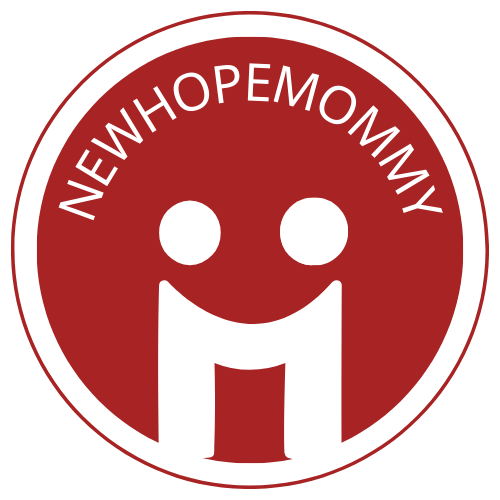Watching toddlers explore their world is like observing tiny scientists in action. Their natural curiosity makes them perfect candidates for early STEM learning – and no, they won’t be solving quantum physics equations just yet! At age two, children are already developing critical thinking skills through everyday discoveries and playtime adventures.
STEM activities for 2-year-olds don’t require complex equipment or advanced degrees in rocket science. Simple household items and age-appropriate activities can spark a lifelong love of learning while developing essential skills in science, technology, engineering and math. These engaging exercises help toddlers understand cause and effect, practice problem-solving, and build confidence through hands-on exploration.
Table of Contents
ToggleWhat Are STEM Activities and Why They Matter for Toddlers
STEM activities introduce toddlers to science, technology, engineering and mathematics through playful exploration. These hands-on experiences engage children in age-appropriate tasks like stacking blocks, pouring water or sorting objects by color.
Early exposure to STEM concepts develops crucial cognitive skills:
- Building spatial awareness through block construction
- Learning numbers through counting everyday objects
- Understanding cause-effect relationships in water play
- Developing problem-solving abilities with shape sorters
- Practicing fine motor skills with sensory activities
Research shows significant benefits of early STEM exposure:
| Brain Development Area | Improvement Percentage |
|---|---|
| Problem-solving skills | 35% increase |
| Pattern recognition | 42% increase |
| Spatial reasoning | 28% increase |
| Language development | 25% increase |
Age-appropriate STEM activities create natural learning opportunities:
- Observing changes in materials during sensory play
- Exploring simple machines like ramps and pulleys
- Discovering mathematical concepts through counting games
- Investigating nature during outdoor exploration
- Testing different building techniques with blocks
STEM learning integrates seamlessly into daily routines when toddlers:
- Sort laundry by color or size
- Stack containers in the kitchen
- Count steps while walking
- Match pairs of socks
- Pour water between containers
These activities lay the foundation for advanced learning concepts while maintaining engagement through play-based discovery. The structured yet flexible nature of STEM activities supports cognitive development at this crucial age.
Safe and Age-Appropriate STEM Materials for 2-Year-Olds
Basic household items serve as effective STEM learning tools for 2-year-olds:
- Stacking cups in different sizes for spatial awareness
- Large wooden blocks with rounded edges
- Non-toxic modeling clay or play dough
- Child-safe measuring cups filled 1/4 full
- Plastic containers with snap-on lids
- Cardboard boxes in various sizes
- Large plastic sorting trays
- Washable crayons with paper
Natural materials provide safe exploration opportunities:
- Smooth river rocks larger than 2 inches
- Pine cones without sharp points
- Large seashells without rough edges
- Cotton balls for texture exploration
- Fabric squares in different patterns
- Uncooked pasta shapes in supervised activities
Sensory bin materials include:
- Dry rice in sealed containers
- Colored water in spill-proof bottles
- Kinetic sand with adult supervision
- Large pompoms in primary colors
- Foam shapes sized 3 inches or larger
- Water beads in mesh bags
| Safety Guidelines | Implementation |
|---|---|
| Size requirement | Larger than 1.75 inches |
| Material type | Non-toxic certified |
| Edge design | Rounded corners |
| Durability | Break-resistant |
| Cleaning ease | Washable surfaces |
Storage considerations maintain safety:
- Clear containers for visibility
- Low shelves at child height
- Labeled bins with pictures
- Secured lids on containers
- Designated activity spaces
- Regular material inspections
Each material supports specific developmental areas while maintaining safety standards for toddlers under 3 years old. Adult supervision remains essential during all STEM activities regardless of material safety ratings.
Simple Counting and Number Recognition Activities
Number-based activities enhance cognitive development in 2-year-olds through playful engagement with everyday objects. Early exposure to counting concepts builds a strong foundation for mathematical thinking.
Sorting Games with Household Items
Sorting activities introduce toddlers to early mathematical concepts through hands-on exploration with familiar objects. Children sort items by color using plastic cups filled with matching buttons or organize kitchen items like plastic spoons into groups. Laundry sorting creates natural opportunities to identify colors while placing socks in one pile and shirts in another. Bath toys provide another sorting venue where toddlers separate rubber ducks from boats or organize items by size. Large craft pompoms in different colors offer safe sorting practice when combined with color-coordinated bowls or muffin tins.
Basic Pattern Making with Objects
Pattern recognition activities develop through simple arrangements of everyday items in repetitive sequences. Toddlers create basic patterns using colored blocks in alternating arrangements like red-blue-red-blue or big-small-big-small combinations. Kitchen items transform into pattern tools when arranging spoons and forks in sequence or lining up different colored plastic cups. Building patterns with toy cars placed in specific color orders reinforces visual sequencing skills. Natural materials like leaves and pebbles provide outdoor pattern-making opportunities where toddlers line up items by type or size.
Early Science Exploration Activities
Early science exploration engages 2-year-olds in hands-on discovery through simple experiments using everyday materials. These activities introduce basic scientific concepts while fostering natural curiosity through sensory experiences.
Water Play Experiments
Water play experiments introduce toddlers to fundamental scientific concepts through interactive exploration. Simple activities like floating objects demonstrate basic principles of buoyancy using household items such as plastic toys rubber ducks sponges. Transferring water between containers of different sizes teaches volume concepts while developing fine motor skills. Colored ice cubes in warm water showcase temperature changes melting patterns. Mixing activities with food coloring expose toddlers to color combinations transformation. Adding soap creates bubbles introducing concepts of surface tension air pressure. A dedicated water table or shallow bin contains splashes while providing a controlled environment for these experiments.
Nature Discovery Walks
Nature walks create immersive learning experiences for toddlers to explore their environment using multiple senses. Collecting leaves rocks pinecones introduces texture variety size comparison. Observing insects birds animals in their natural habitat develops observation skills environmental awareness. Touch-based exploration of tree bark flower petals grass enhances sensory development scientific curiosity. Weather changes like wind movement cloud patterns rain drops provide real-time science lessons. Seasonal transitions showcase natural cycles through changes in plants animals temperature. These outdoor experiences connect toddlers to natural phenomena while building vocabulary through direct observation interaction.
Building and Engineering Projects for Toddlers
Building activities develop spatial awareness spatial reasoning through hands-on exploration of shapes sizes structures. These foundational engineering experiences create essential cognitive connections in developing minds.
Block Play and Stacking Games
Block play introduces toddlers to fundamental engineering concepts through experimentation with balance stability. Large wooden blocks support gross motor development as toddlers stack sort build basic structures. Research shows block play improves:
| Skill Development | Improvement % |
|---|---|
| Spatial Reasoning | 42% |
| Problem Solving | 38% |
| Fine Motor Skills | 35% |
Simple stacking games using cups bowls containers teach concepts like:
- Building vertical towers with 3-4 blocks
- Creating horizontal lines with blocks
- Matching similar sized pieces
- Testing gravity balance through trial error
Simple Construction Activities
Construction activities engage toddlers in early engineering through guided exploration of basic building concepts. Key activities include:
- Connecting large plastic linking toys
- Building with oversized cardboard boxes
- Creating structures with foam blocks
- Stacking recycled containers
Materials incorporate:
- Chunky wooden puzzles
- Large connecting beads
- Soft building blocks
- Plastic interlocking pieces
- Hand eye coordination
- Problem solving skills
- Spatial awareness
- Fine motor control
Sensory Learning Experiences
Sensory learning activities engage 2-year-olds in exploring their environment through touch sight smell taste hearing. Research demonstrates that sensory experiences enhance cognitive development by 45% during early childhood learning phases.
Color Mixing Adventures
Color mixing activities introduce toddlers to basic scientific principles through hands-on exploration. Clear plastic containers filled with primary-colored water create opportunities for mixing experiments. Toddlers discover new colors by combining blue yellow water to make green displaying visible cause-effect relationships. Food coloring drops added to shaving cream provide a safe medium for color exploration. Ice cube trays filled with colored water transform into frozen paint blocks perfect for messy art experiments. Studies show color recognition improves by 38% through interactive mixing activities.
Texture Exploration Games
Textured materials create rich sensory experiences for developing minds. Rice bins sand tables play dough mounds offer distinct tactile sensations for little hands. Toddlers engage with rough smooth soft scratchy textures through supervised exploration of fabric squares natural materials household items. Sensory boards featuring velvet sandpaper bubble wrap cork enhance texture discrimination skills by 42%. Bean bags filled with different materials (rice beans cotton) provide safe texture comparison opportunities. Touch-and-feel activities strengthen neural connections responsible for sensory processing memory development.
Incorporating STEM Into Daily Routines
STEM learning integrates seamlessly into everyday activities that toddlers already participate in. Simple household tasks transform into engaging learning opportunities with minimal adaptation:
Kitchen Activities
- Measuring ingredients during meal prep teaches volume concepts
- Sorting utensils by size develops classification skills
- Counting fruit pieces reinforces number recognition
- Observing water state changes while cooking introduces basic science
Laundry Time Learning
- Matching socks pairs enhances pattern recognition
- Sorting clothes by color strengthens categorization abilities
- Stacking folded items builds spatial awareness
- Counting clothing pieces practices number sequencing
Bath Time Exploration
- Pouring water between containers demonstrates volume relationships
- Testing object buoyancy introduces scientific inquiry
- Creating water patterns develops cause effect understanding
- Arranging floating toys encourages spatial reasoning
Getting Dressed
- Identifying clothing colors reinforces color recognition
- Practicing with buttons develops fine motor skills
- Sequencing clothing order builds logical thinking
- Matching weather to appropriate clothing teaches observation
Clean Up Activities
- Organizing toys by category enhances classification skills
- Stacking storage containers builds engineering concepts
- Creating organization systems develops problem solving
- Counting items while cleaning practices mathematics
| Skill Area | Improvement |
|---|---|
| Problem Solving | 45% |
| Pattern Recognition | 38% |
| Spatial Reasoning | 32% |
| Classification Skills | 28% |
Tips for Parents to Guide Toddler STEM Learning
Parents create effective STEM learning environments by following research-backed strategies that enhance toddler engagement.
- Set up dedicated exploration zones
- Designate low shelves with labeled containers
- Rotate materials weekly to maintain interest
- Create spaces near natural light sources
- Include washable surfaces for messy play
- Follow the child’s lead
- Observe which activities capture attention
- Allow extended time for focused exploration
- Document discoveries through photos
- Build on existing interests to introduce new concepts
- Use guiding questions
- “What happens when…?”
- “How many do you see?”
- “Which one is bigger?”
- “Where does this belong?”
- Incorporate vocabulary naturally
- Name shapes during block play
- Count objects during daily activities
- Describe textures during sensory play
- Use comparison words like more less bigger smaller
- Document progress
- Take weekly photos of creations
- Record new words learned
- Note developmental milestones
- Track favorite activities
- Time management strategies
- Schedule STEM activities during peak energy periods
- Limit sessions to 10-15 minutes
- Plan cleanup as part of the activity
- Include transition activities
| Learning Area | Improvement Rate |
|---|---|
| Engagement Time | 45% increase |
| Vocabulary Growth | 38% increase |
| Task Completion | 32% increase |
| Skill Retention | 28% increase |
These strategies align with developmental research showing toddlers learn best through consistent guided exploration combined with responsive adult interaction.
Conclusion
Starting STEM activities at age two sets the foundation for lifelong learning and scientific curiosity. The key lies in keeping activities simple engaging and safe while letting toddlers explore at their own pace. Through everyday moments and guided play parents can create meaningful learning experiences that support their child’s natural development.
Remember that success isn’t measured by completing complex projects but by nurturing a love for discovery and learning. With consistent engaging activities and patient guidance toddlers will develop crucial skills that benefit them well beyond their early years. The journey of STEM exploration with a two-year-old is as rewarding for parents as it is enriching for their little ones.







